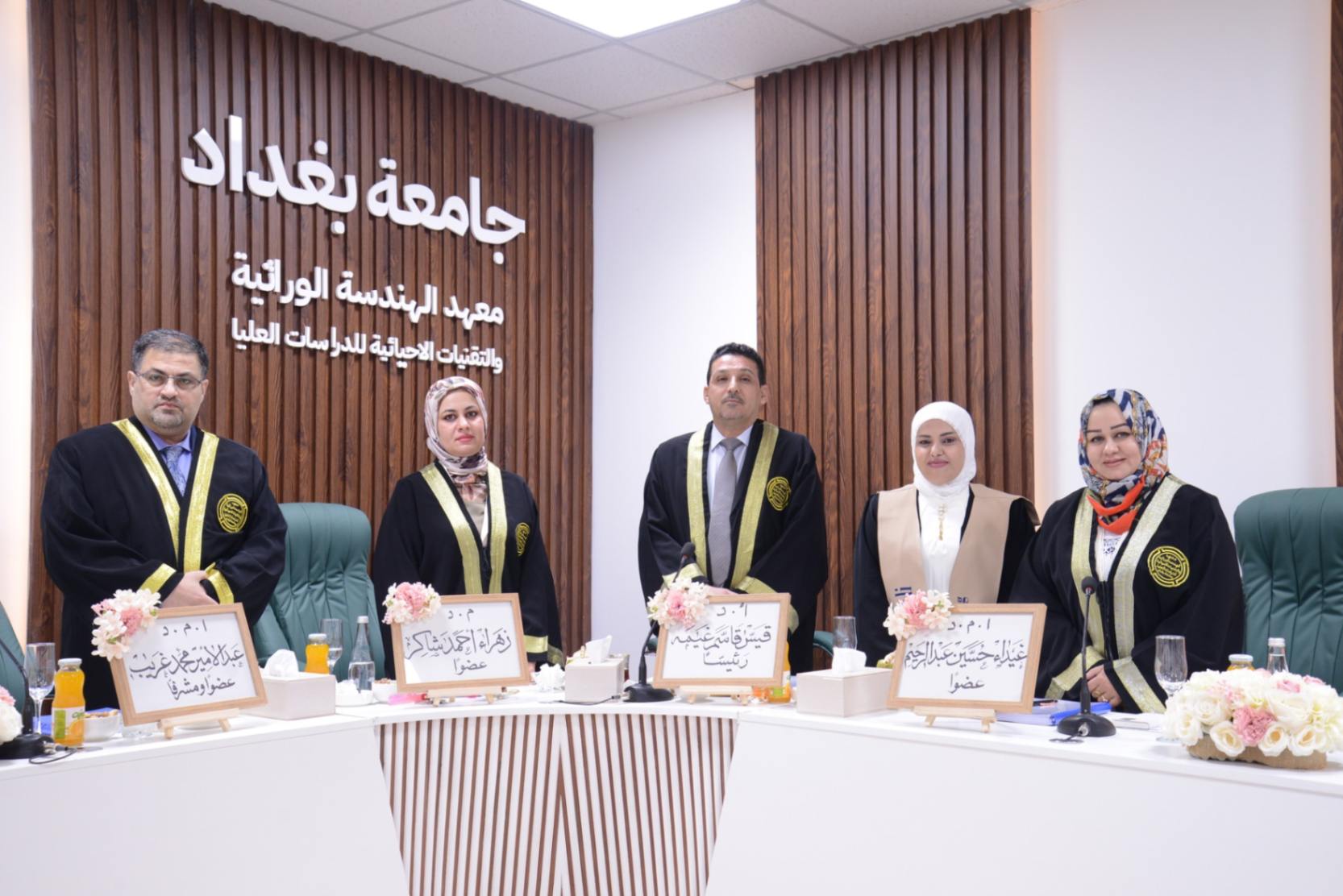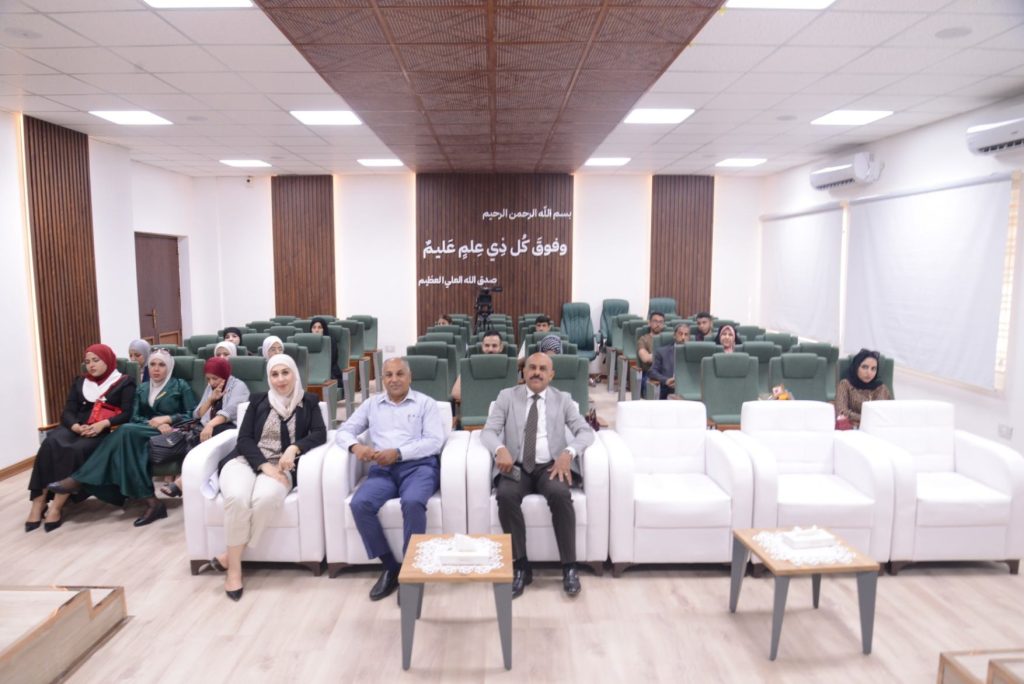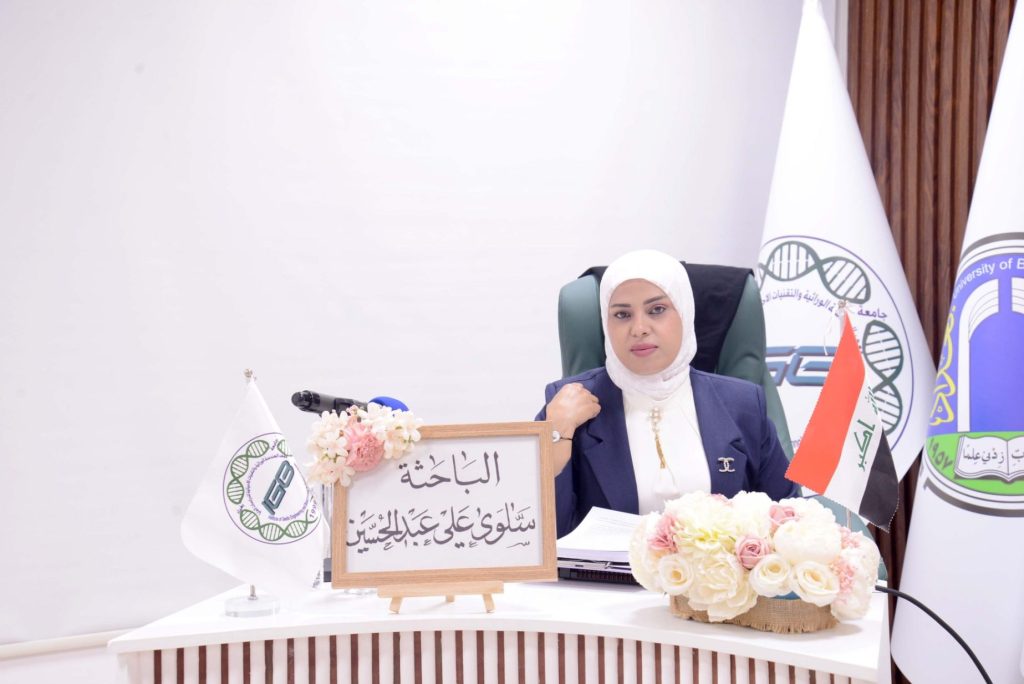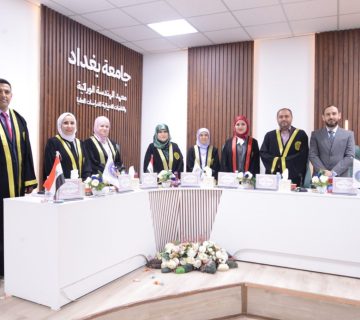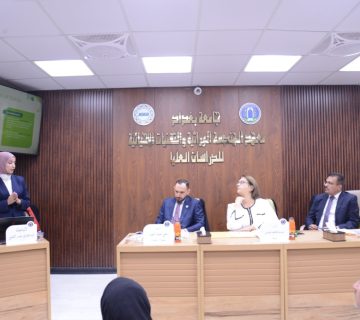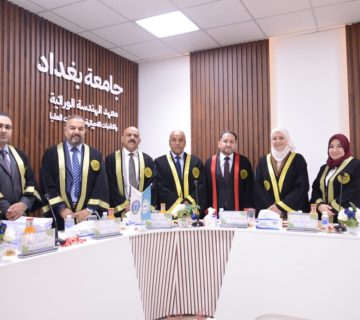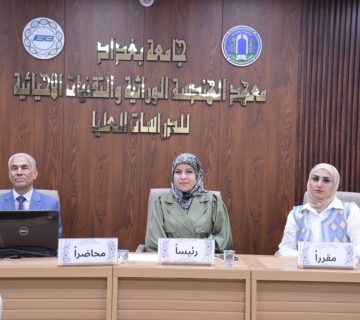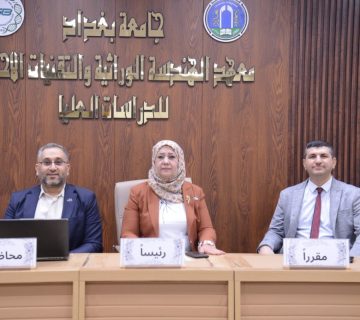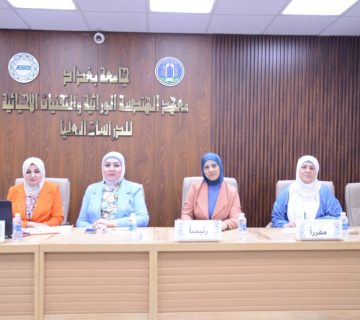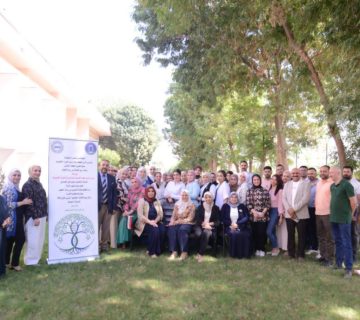The Institute of Genetic Engineering and Biotechnology for Postgraduate Studies at the University of Baghdad discussed the master’s thesis of student Salwa Ali Abdul-Hussein, titled:
“Molecular Evaluation of Efflux Pump Gene Expression (MexAB-MexR) in Clinical Multidrug-Resistant Pseudomonas aeruginosa Isolates Upon Exposure to Phenylalanine-Arginine β-Naphthylamide (PaβN).”
The study aimed to focus on inhibiting efflux pumps using chemical substances known as efflux pump inhibitors (EPIs). PaβN was the first inhibitor of the RND pump family and acts as a competitive inhibitor by blocking substrate binding and efflux. The study also evaluated the inhibitory efficiency of PaβN and its synergistic effect after antibiotic susceptibility testing, in an attempt to identify the most effective combination.
The study concluded that Pseudomonas aeruginosa was notably present in various clinical samples, particularly in burn infections and urinary tract infections.
The findings showed that P. aeruginosa exhibited strong resistance to several classes of antibiotics, especially the penicillin class (piperacillin), while it was more sensitive to a limited number of antibiotics, particularly the beta-lactam/beta-lactamase inhibitor combination (piperacillin-tazobactam).
Additionally, most P. aeruginosa isolates demonstrated a high ability to form biofilms, and the majority were positive for efflux pump activity.
The study recommended the use of a combination of antibiotics and PaβN as an efflux pump inhibitor, along with other gene families besides MexAB-oprM. It also called for further studies on the proposed effect of PaβN on biofilms and quorum-sensing genes, as well as the use of different combinations of antibiotics, such as beta-lactams.
Furthermore, the study advised conducting more molecular analyses to explain the overexpression of the MexAB-like gene sequence and the mutation associated with the observed phenotype.

